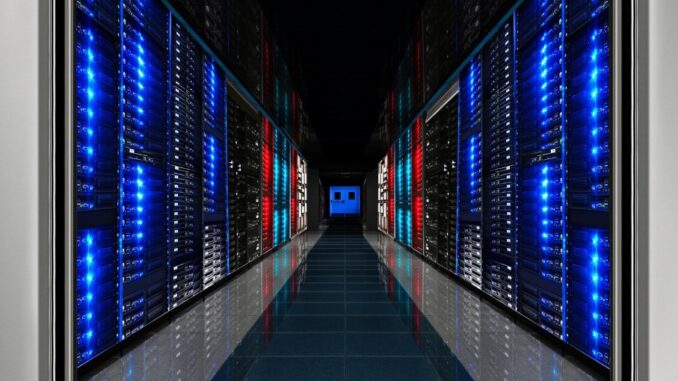
In News
According to research, a new class of exascale supercomputers being developed across the worldwill help in developing vaccines for diseases like novel coronavirus much faster in the future.
In Detail
- Exascale supercomputers are a powerful resource for simulation of biological materials. These are a hundred times faster than the present petascale supercomputers.
- The range of supercomputers is Kilo, Mega, Giga, Tera, Peta and Exa. Exa is followed by 18 zeros which are billion times faster than mobile phones.
- With the help of exascale supercomputers, COVID-19 spike protein simulations in various scenarios can run within a day, rather than weeks or months.
- Supercomputers are resources for simulation of biological materials like molecules that make up cells, membranes, and muscles.
- They also simulate various processes that occur under the influence of chemical agents. They can solve the vast number of equations in a short period.
- In biological simulations, a protein and a membrane can have millions of atoms.
- Scientists have to solve millions of equations for every small atom, which they must doa thousand times more. This is time-consuming.
- So, computational scientists are creating simulations for various processes using supercomputers.
- These simulations take a huge amount of computing power and exascale computers being developed by many countries will come to their help.
How Supercomputers Help in Fighting Viruses?
- Coronavirus has many mushroom-shaped proteins sticking out of small shells.
- The proteins contain RNA that replicates itself when the virus attaches to the human cell.
- Scientist are trying to answer how does the RNA of the virus get inside the human cell, how it is taking over the DNA of the human cell?
- Answers to these questions can take time when studied in the laboratory.
- But, with the help of supercomputers, biologists and experts can generate vaccines within a short period and can protect humans from this deadly virus.
C-DAC
- India’s Center for Development of Advanced Computing (C-DAC) has announced ahackathon SAMHAR COVID-19to fight the coronaviruspandemic outbreak.
- SAMHAR COVID-19 stands for Supercomputing usingAI, ML, and HealthcareAnalytics based Research.
- C-DAC has embarked on this program as an opportunity for researchers to identify, track, and forecast the outbreak by using AI and to aid the discovery of the drug.
- This hackathon intends to prepare the research community to make use of HPC-AI and keep ready for the future.
- Hackathon is open to researchers, intellectuals, MSMEs, startups and industries who are engaged in bringing out innovative ideas for prediction, forecasting and building health models that could change the perception of pandemic outbreaks using AI on supercomputers.
National Supercomputing Mission
- To meet the computational demands of researchers, intellectuals, MSMEs, startups and industries the National Supercomputing Mission (NSM) was started.
- Through the mission,a vast supercomputing grid, which consists of more than 70 high-performance computing facilities, are being installed across the country.
- The main objective of this mission is to make India one of the world leaders in supercomputing and to enhance the capability of solving problems of national and global purposes.
- The Department of Science and Technology (DST) and the Department of Electronics and Information Technology (DeiTy) along with C-DAC Pune and IISC Bangalore are collaboratingfor the mission.
- The overall estimated cost of the Mission is Rs.4500 croreto be spent over a period of seven years beginning from 2020.
- India’s first supercomputer was Param Shivay which was assembled at IIT (BHU). Similarly, Param Shakthi and Param Brahma were assembled at IIT Kharagpur and IIS Pune.
- Today, India ranks 22nd with two supercomputers in the top 100 global list – Pratyush from Indian Institute of Tropical Meteorology (IITM) which ranks 57th and Mihir from National Centre for Medium Range Weather Forecasting, which ranks 100th.
- The top three supercomputers of the world are – Summit from the USA, Sierra from the USA, and Sunway TiahuLight from China.
Application Areas:
- Weather Prediction
- Climate Modelling
- Computation of biochemical
- Disaster simulations and managements
- Atomic Energy Simulations
- Computation of material science and nanomaterials, etc.
Today, NSM has gathered momentum to create computer infrastructure for the country and also to develop the next generation of supercomputer experts.

Leave a Reply
You must be logged in to post a comment.